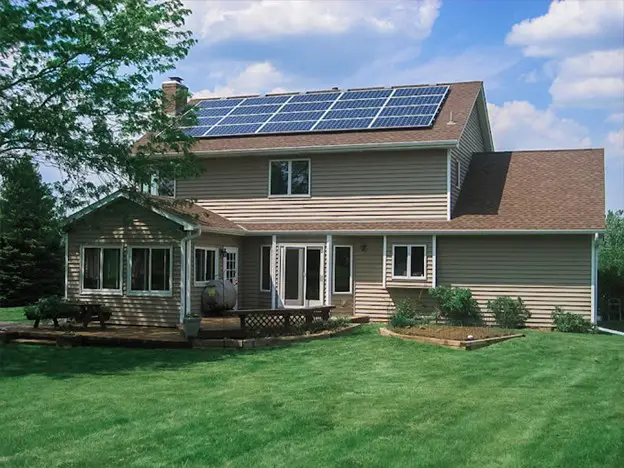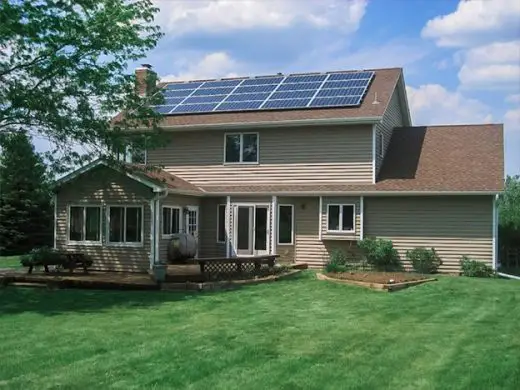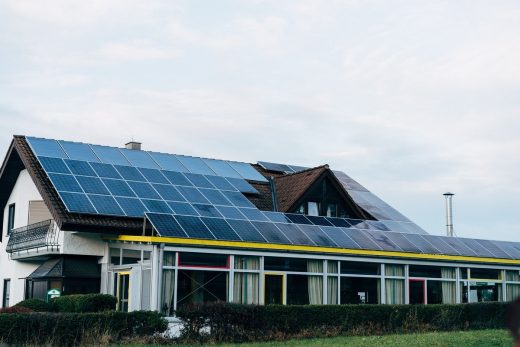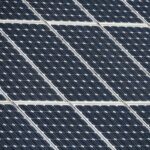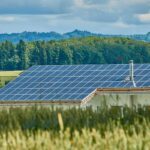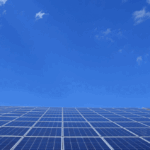Benefits of solar energy to the environment guide, Home photovoltaic return on investment advice, Building PV electricity RoI
Benefits Of Solar Energy To The Environment Advice
3 June 2023
Think of a bright, sunny day when the sky is clear, and everything seems to be in perfect harmony. Now imagine that this same sun could be used as an alternative energy source – one that doesn’t emit harmful pollutants into the atmosphere or add more stress on an already struggling electric grid. This is possible with solar energy.
We believe in the power of renewable sources like solar to help protect our environment and promote sustainability over other forms of electricity production. In this post, we explain the benefits of leveraging solar power so you can make informed decisions about installing solar panels for your home or business’s future electrical needs.
Overview Of Solar Energy
Solar energy is a renewable and sustainable power source that harnesses the sun’s energy and converts it into usable electricity.
It is a key component of the clean energy revolution and has gained significant momentum in recent years. The process of capturing solar energy involves the use of photovoltaic (PV) cells or solar panels, which absorb sunlight and convert it into direct current (DC) electricity.
This electricity can then be converted into alternating current (AC) electricity for residential, commercial, and industrial use.
Types Of Photovoltaic Solar Panels
Monocrystalline Panels: Monocrystalline panels are made from a single, pure crystal of silicon and have the highest efficiency ratings of any solar panel. They produce the most energy in a given amount of space and do well in direct sunlight but are also more expensive than other types. Monocrystalline has an average efficiency of 18-20% and is recommended in most solar energy projects.
Polycrystalline Solar Cells: These types of panels are made from multiple crystals of silicon, and they offer a lower efficiency rating than monocrystalline panels. However, polycrystalline solar cells are generally less expensive to manufacture and easier to produce in large volumes. Additionally, they tend to be more reliable in low light situations with an efficiency rating of 15-17%.
Thin-Film Cells: Thin-film solar cells are made from thin layers of photovoltaic material, such as amorphous silicon, cadmium telluride, or copper indium gallium selenide. They have the lowest efficiency ratings of any solar panel but are usually the most affordable. They’re also the most flexible type of solar panel and can be used in a variety of applications.
Benefits Of Solar Energy To The Environment
Renewable Energy Source
Solar energy is a renewable source of energy, meaning it is available in abundant amounts and can be used again and again without depleting its resources. The national renewable energy laboratory confirms solar energy does not emit any pollutants or greenhouse gases (carbon dioxide) into the atmosphere, making solar power an environmentally friendly choice.
Clean Air
By using solar energy to generate electricity, we can reduce the amount of pollutants and carbon emissions released into the atmosphere. This will lead to healthier air quality and fewer health risks associated with air pollution.
Reduced Dependence on Fossil Fuels
Solar power is a clean, renewable source of energy that does not require the burning of fossil fuels like oil, coal, or natural gas. By transitioning to renewable sources of energy like solar power, we can reduce our dependence on these finite resources and help protect the environment in the long-term.
Energy Independence
With solar energy systems, households and businesses can become more self-reliant and less reliant on public utilities. This reduces their electricity bills, as well as their vulnerability to blackouts caused by grid outages.
Land Use
Solar energy systems require very little land compared to other large-scale energy production systems like coal and nuclear plants. This means that solar energy can be used in more places without having to sacrifice valuable green spaces or agricultural fields.
FAQs
How Does Solar Energy Help Reduce Greenhouse Gas Emissions?
Solar energy helps reduce greenhouse gas emissions because it is a renewable source of energy. This means that the energy harnessed from the sun does not produce any direct emissions when generating electricity. Additionally, solar power reduces reliance on burning fossil fuels which release harmful gasses into the atmosphere. Solar energy is a clean, renewable and sustainable form of power which helps to reduce greenhouse gas emissions over time.
Is Solar Energy Reliable During Cloudy Or Rainy Days?
Solar energy can still be harvested even on cloudy or rainy days, although less efficiently than during sunny periods. On a cloudy day, solar panels typically generate about 20-25% of their normal energy output. Solar batteries can also be used to store any excess energy generated on sunny days for use during periods of low light.
What Are The Environmental Benefits Of Using Solar Panels At Home?
Firstly, it reduces reliance on traditional electricity generated from fossil fuels such as oil and oil, resulting in lower greenhouse gas emissions. Solar panels also contribute to improved air quality by reducing the release of pollutants associated with conventional energy sources. Additionally, using solar energy at home promotes the conservation of natural resources and supports a more sustainable energy system.
Are There Any Government Incentives For Solar Energy Adoption?
Yes, most governments provide financial incentives and support for adoption of solar energy. This includes tax credits or rebates that can help cover the initial cost of solar energy installations system.
Plus, some governments may offer feed-in tariffs, which allow homeowners to be paid for any excess solar power they generate and sell back to the grid.
How Does Solar Energy Compare To Other Renewable Energy Sources Regarding Environmental Benefits?
Solar energy is often considered one of the most efficient and cost-effective renewable energy sources due to its ability to generate electricity without producing any emissions or air pollution. It also has a relatively quick installation process compared to other renewable sources such as wind and hydropower.
Also, solar energy does not require large amounts of land or water resources, allowing for easier and more widespread adoption. All these factors make it one of the most environmentally friendly renewable energy sources.
Recap: Save The Environment With Solar Power
Solar energy system offers tons of advantages to the environment. Not only does it reduce our reliance on fossil fuels, but it also reduces our overall environmental impact by avoiding emissions and pollutants that surround this kind of traditional energy source.
Furthermore, solar power can help reduce water waste since many traditional sources require large volumes of water to operate properly.
Remember that solar energy can serve both as a primary source of power and as a backup source when other forms of energy are not available. The beauty of solar power is that it provides clean, renewable energy.
Ultimately, the possibilities are endless when tapping into an idea like using solar energy to save the environment and make sustainability happen all around us in the future.
Comments on this guide to Benefits of solar energy to the environment – building photovoltaic electricity article are welcome.
Solar Panels Articles
Solar Panels Posts
How architects implement solar panels in design
DIY Solar System: how to install solar panels
Before Installing Solar Panels
Building
Residential Architecture Articles
Masterplan building designs

image from architecture practice
Comments / photos for the Benefits of solar energy to the environment – building photovoltaic electricity advice guide page welcome

